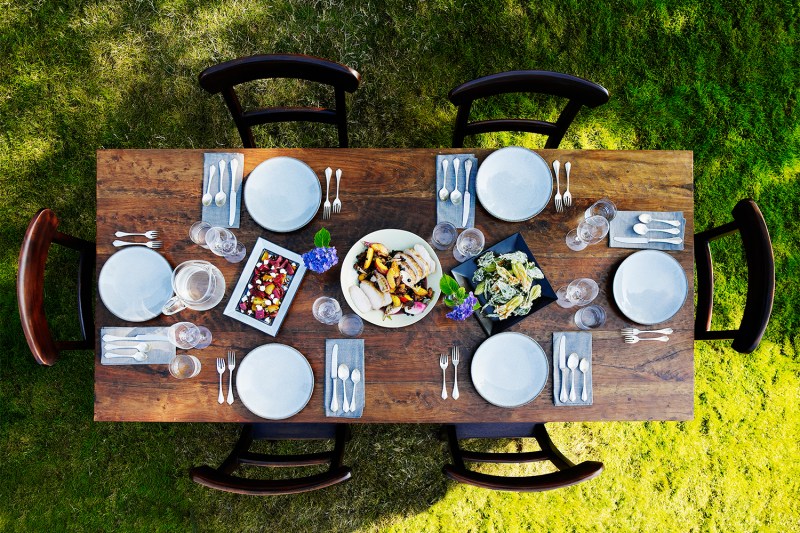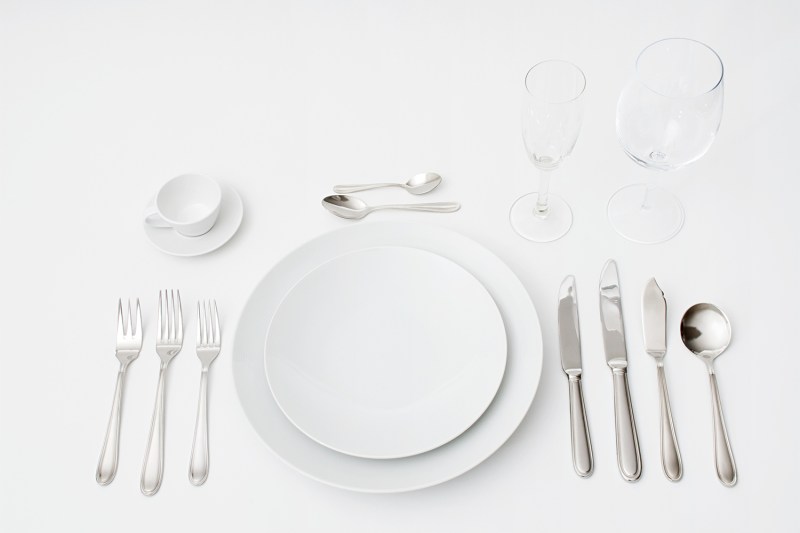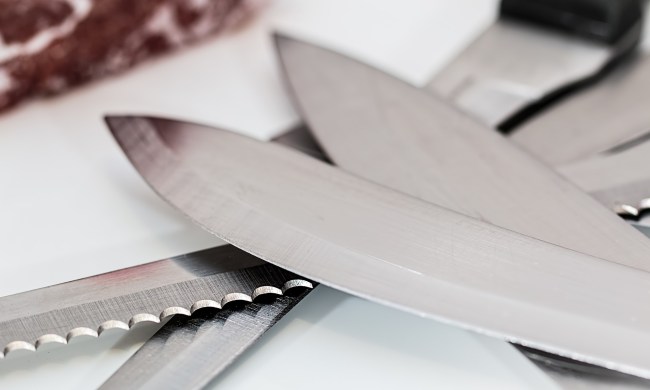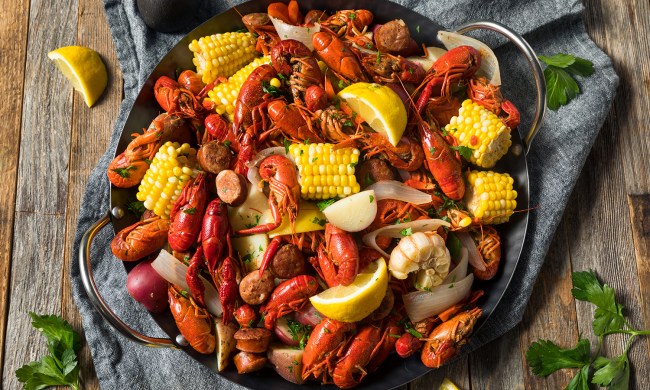
Listen up, men. Polite society is calling … are you ready to accept the charges? (If you didn’t know, that’s a reference to collect calls, which are this thing people used to do using landlines and which for a while Carrot Top promoted via television commercials. Those were strange times.)
Sure, you may be most at home enjoying a cold beer in front of a loud TV or sipping flask whiskey by the camp fire, but like it or not, knowledge of the basics of table settings is going to be important more than once in your life. Whether you’re taking a seat at a wedding, hosting a classy soiree in honor of a local politician, or simply trying to conceal what an uncultured asshat you are from your girlfriend’s snooty, blueblood parents, knowing what each fork is for and where the bread belongs is important information. And don’t worry, if you’re smart enough to remember the following sentence, you’re smart enough to grasp the basics of proper table setting:
Say Forks For Pretty Knowledge Soon! Boys, look: Daryl’s Running!
See? That sentence is a brilliant acronym for the basic setting arrangement of Salad Fork, Fork, Plate, Knife, Spoon, Bread Left, Drink Right! Okay, maybe not a brilliant acronym … in fact … it’s pretty terrible. Let’s try again:
Stooping For Forgotten Keys Slowly! Better Lock Dave’s Rolls-Royce!
No, that’s much worse. Alright, let’s try this the old fashioned way.
Here’s the deal: when setting a proper place at the table, you need to know what exactly will be served. I’m going to take the liberty of assuming that if you’re reading this article, your next meal won’t involve oysters or a dessert spoon or demitasse et al. We’re going to discuss a formal yet basic setting, and in fact if you’re more of a visual person and don’t care for witty writing, you may feel free to simply reference this image:

And there you have it. But let’s walk through.
If there’s a salad plate or soup bowl involved, then indeed the napkin sits off to the left of everything, as shown in this image. Working left to right, you lay out forks in the order they’re most often used. Thus the salad fork, dinner fork, and then the dessert fork (fancypants meals involve a dessert spoon and fork placed above the plate, but get real, Fauntleroy, we don’t truck with that tripe here).
Next, we have the plate. That’s the thing the food goes on. If the aforementioned salad and soup are to be involved, stack the soup bowl atop the salad plate.
Now move on to the right. You knife goes directly to the right of the plate, followed by spoons. You can lay the coffee/teaspoon out next, as it will be used last (why is the knife so close to the plate if it’s not used last? Buddy, some things are best left unasked). The soup spoon will come next if there is one, and a general purpose spoon can pinch hit or join the gang.
Alright, good: silverware and plates, check!
Now, moving up to the top row. This is a simple trick, and one you should conceal from haughty New England types, but if you must cheat, here’s a good one for you: rest your hands on the table pinky down, palms facing one another. Now touch your thumbs to your palms. See how your left hand sort of makes a lowercase “b” and your right a “d” when you do that? There’s your hack: the “b” is for bread and the “d” is for drink. Set your bread plate on the upper left with a butter knife at an angle across it.
Now set your beverage vessels (er, cups) at the top right. Always start with the water glass at the left of the lineup and then add a red wine glass, then a white wine glass, then a cocktail glass. Remove whichever booze cups aren’t used, and note that coffee and teacups usually come out later. If you want to set it out earlier, set it above/behind the other glasses.
And hey, guess what? You’re done. Let’s recap: forks and only forks on the left of the plate. Knife then spoon(s) on the right. Bread upper left; drinks upper right. Special bowls or plates? Dead center. Special spoons and forks? Add them to the other spoons and forks.
If you’re preparing an even fancier place setting than the one we’ve discussed, you need no guide, sir: you’re already either a cultured aristocrat … or you’re already damned to ruin the evening in front of those callow country-club creeps. Ah, you don’t need ’em anyway, you got yer music an’ yer dreams!
Article originally posted July 2, 2015.



